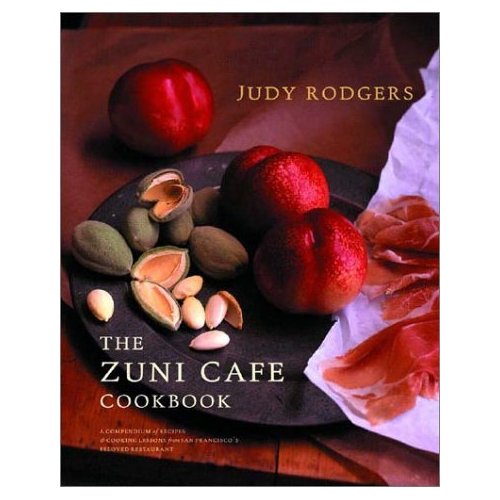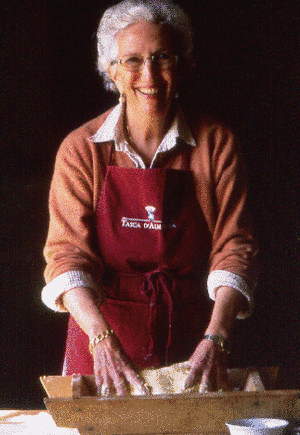It’s been nearly six years since we signed our lease on Minetta Lane and prepared to open Bellavitae. Looking back, many of our concepts seem cliché now, but at the time, we were one of the pioneers in New York’s restaurant scene. Perhaps we were not always the first with these ideas, but Bellavitae undoubtedly influenced the city’s dining experience. The sincerest form of flattery comes to mind, as many of our original concepts are ubiquitous now, such as:
-
The Chef’s Bar (we called it “the sushi bar” until the day we opened)
-
Cooking in a wood-burning oven (although we never did pizza)
- Using only seasonal, organic, and local produce whenever possible
- Dishes prepared for sharing, especially appetizers, in a non-tapas restaurant
- A high-quality wine selection at every price point
When the recession hit in late 2007, we immediately began to change our model to reflect the new business environment (a Wall Street background helped). I began to wear many more hats than before, and soon I was working well over 14 hours a day – every day. Over the next two years, we found ourselves in a position where, in order to continue the restaurant in our current space and within negative economic conditions, we would need either to significantly raise our prices or lower our quality – neither of which appealed to me. So in July of this year, I decided to close our location on Minetta Lane.
Our Amazing Guests
Thousands of people have visited Bellavitae over the years and, of course, scores of relationships now bless our lives. The remarkable diversity of guests who came to Bellavitae reflected one commonality: a love of good food and wine in the Italian style, prompting an almost cult following that has been simply magical.
We had the opportunity to develop friendships with many in the food and wine world; and were honored to serve numerous influential individuals, such as:
- Eric Asimov
- Dan Barber
- Joe Bastianich
- Mario Batali
- Rose Levy Bernanbaum
- Vince Calcagno
- Marco Canora
- Dana Cowin
- Andrew Dornenberg
- Florence Fabricant
- Barbara Fairchild
- Carol Field
- Susan Friedland
- Antonio Galloni
- Ina Garten
- Michael Gelb
- Joshua Green
- Dorie Greenspan
- Amanda Hesser
- Ray Isle
- Nancy Jenkins
- Sarah Jenkins
- Anna Tasca Lanza
- Sandra Lee
- Silvano Marchetto
- Tom Matthews
- Jay McInerney
- Keith McNally
- Danny Meyer
- Karen Page
- Judy Rodgers
- Regina Schrambling
- Tom Sietsema
- Nancy Silverton
- Beatrice Ughi
- Gary Vaynerchuk
- Mary Ellen Ward
- Alice Waters
- Patricia Wells
- Lora Zarubin
I’ve never been star struck, but it was always fun to have famous people in the restaurant, many of whom became regulars. Previously, I respected their privacy by not publicizing their patronage, but now it seems appropriate to include them in my reminiscing:
Authors / Publishing World
- Amy Arbus
- Candace Bushnell
- Michael Cunningham
- Joan Didion
- Peter Gethers
- Robert Hughes
- Sara Matthews
- Kirk Russell
- Leanne Shapton
- Anna Wintour
Journalists / Columnists
- Dan Abrams
- Alan Colmes
- Ann Coulter
- David Gregory
- Phil Griffin
- Tom McDonald
- Peggy Noonan
- Frank Rich
- Harry Smith
- Leslie Stahl
- Cal Thomas
Entertainers

- Charles Askegard
- Noah Baumbach
- Boatie Boatwright
- Bono
- Beth Broderick
- Matthew Broderick
- Josh Brolin
- Kathleen Chalfant
- Ethan Cohen
- Joel Cohen
- Carmen Consoli
- Willem Dafoe
- Claire Danes
- Dana Delany
- Susan Dey
- Janet Dickinson
- The New York Giants
- William Goldman
- Hazelle Goodman
- Heather Graham
- Joel Grey
- Marvin Hamlish
- Jill Hennessy
- Celeste Holm
- William Hurt
- Marketa Irglova
- Michael Keaton
- Richard Kind
- Michael Kors
- Diane Lane
- Jennifer Jason Leigh
- Annie Liebovitz
- Anne Meara
- Marlene Matlin
- Francess McDormand
- Bette Midler
- Nicole Mitchell
- Jeffrey Dean Morgan
- Mike Myers
- Gianna Nannini
- Mary Louise Parker
- Sarah Jessica Parker
- Bernadette Peters
- Pink Martini
- Jean Reno
- Alan Rickman
- Paul Rudd
- Keri Russell
- Paul Shaffer
- Molly Shannon
- Allen Shawn
- Wallace Shawn
- Phoebe Snow
- Bernard Sofronski
- Jerry Stiller
- Julia Stiles
- Hillary Swank
- Billy Bob Thornton
- Bob Vila
- Bruce Vilanch
- Frank Wood
Events
Occasionally we held events at Bellavitae, and three stand out:

Judy Rodgers from San Francisco’s Zuni Café held a private dinner at Bellavitae and cooked some of her favorite dishes. Her cookbook remains one of my favorites and I’ll always be grateful for her kind invitation to visit Zuni and cook for a few weeks before we opened Bellavitae.

A Night in Sicily was a memorable evening when Anna Tasca Lanza prepared dinner for guests and paired wines from the Regaleali estate with dishes that came from her various cookbooks. We named one of the dishes from that event in her honor, and the dish remained our menu’s number-one bestseller until the day we closed.
Perhaps the most memorable event was in the spring of 2007 when we invited the Tre Bicchieri winners to Bellavitae after their annual tasting at the Puck Building. We prepared a great Italian feast and they brought their award-winning wines – and what a night it was. I don’t remember the menu now, but I do remember most of those who attended, and I’m not sure there has ever been a collection of such prestigious winemakers in one place outside of Italy that wasn’t some sort of promotion. This was all about having fun. I don’t think the following is a complete list of those who attended, but it sure is an impressive one:
- Bellavista, Mattia Vezzola
- Braincaia, Martin Kronenberg
- Bruno Giacosa, Bruna Giacosa
- Casanova di Neri, Giacomo Neri
- Tenute Dettori, Alessandro Dettori
- Donnafugata, José Rallo
- Ferrari, Luca Ferrari
- Fonterutoli, Francesco Mazzei
- Foradori, Elisabetta Foradori
- Tenuta di Ghizzano, Ginervra Pesciolini
- Giacomo Conterno, Roberto Conterno
- Lamborghini, Patrizia Lamborghini
- Poliziano, Federico Carletti
- Tasca d’Almerita, Giuseppe Tasca
- Vietti, Luca Currado
- Villa Bucci, Ampelio Bucci
We simply had wonderful food, award-winning and incomparable wines, and great camaraderie. How Italian is that?
On Becoming a Chef
What I’ve learned most through our experience on Minetta Lane is how difficult it is to prepare simple food in a restaurant setting. The quintessence of traditional Italian cooking is its simplicity, along with proper technique and using the highest quality ingredients.
Eating in the Italian style is about celebrating the garden rather than “sophisticated” manipulation in the kitchen. In traditional Italian cuisine, there are no complex sauces to hide behind, no short cuts on technique, and nothing available to mask improper balance or inferior ingredients. Nevertheless, after six years, the ability to perform this challenging task consistently became almost second nature to us and it’s a skill that I now proudly think of as proprietary; it is perhaps my greatest personal asset.
Grazie
There are too many individuals to thank for me to include in this post, and I hope to reach out to each person in the near future. The many people who have come into my life because of Bellavitae touches my heart and will always be a part of my soul. From staff to guests and to all of those listed above, I will be forever grateful.
I don’t think of Bellavitae as a destination, a restaurant, or even a way of life. It’s simply a way of enjoying Italian food and wine. So keep an eye on this blog, as I will continue to write about Italy’s greatest gift to the world.
So what happens next? All I can say is look for Bellavitae in the future – and look in unexpected places.






